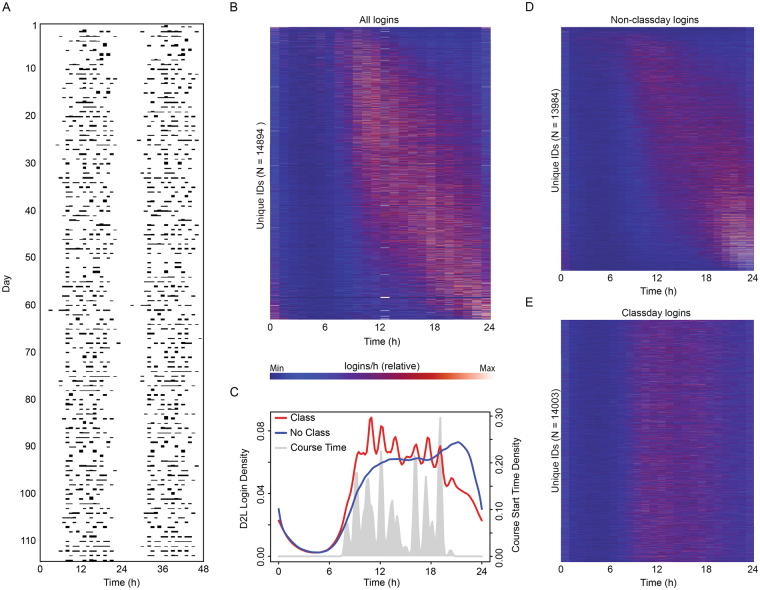Figure 1.
Student LMS logins showed signs that they contain circadian rhythm information, and social disruptions thereof. A double-plotted actogram (or raster plot) of login times from an example student across one semester (A) showed daily rhythms with an apparent sleep window between 23:00 and 06:00. Each student’s activity generated a unique hourly histogram (B, single row). When arranged by average phase of activity, a range of activity phases were apparent from early (B, top) to late (B, bottom), though all students shared an apparent sleep window in the late night and early morning. A histogram for all students on days with classes (C, red) showed crenulations that aligned to class start times (C, grey area). The same histogram for non-class days (C, blue) showed a delayed phase and no such crenulations. Consistent with the resulting supposition that non-class days are more representative of circadian rhythms, and class days more disruptive to circadian rhythms, histograms of activity on non-class days still showed a range of activity phases when sorted by average non-class day phase of activity (D), whereas the same ordering of individuals for class day activity (E) showed activity on class days to be largely during class times, and devoid of apparent chronotypes.

